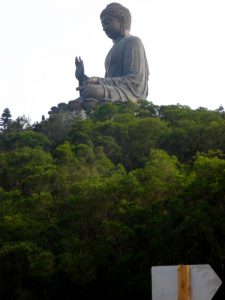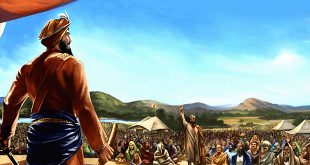Buddha Purnima in Indonesia
Besides being the highest symbol of Buddhism, the Borobudur stupa is also a replica of the universe. It symbolises the micro-cosmos, which is divided into three levels, in which man’s world of desire is influenced by negative impulses; the middle level, the world in which man has control of his negative impulses and uses his positive impulses; the highest level, in which the world of man is no longer bounded by physical and worldly desire. It is ancient devotional practice to circumambulate around the galleries and terraces always turning to the left and keeping the edifice to the right while either chanting or meditating. In total, Borobudur represents the ten levels of a Bodhisattva’s life which a person must develop to become a Buddha or an awakened one.
Buddha Purnima in Tibet
Lhasa: Visitors may currently enter Tibet from mainland China, Hong Kong or Nepal, if they have a visa for China; the Chinese authorities maintain “closed” areas, but most of the country is accessible. In the holy city of Lhasa, the Dalai Lama’s Potala Palace, like many Tibetan monasteries, is now a state museum. Unlike countless shrines and monasteries destroyed during the Cultural Revolution, both the structure and contents of the Potala are preserved. Symbol of the protection of Avalokiteshvara and of the greater Tibetan Buddhist community, the Potala still towers imposingly over Lhasa, and contains countless treasures from the 17th century, including murals, thankas, mandalas, altars, and the famous statue in sandalwood of Padmapani.
The Jokhang monastery, southeast of the Potala, is the most sacred of all Tibetan pilgrimage sites. Somehow surviving the barbarities of the Cultural Revolution, the Jokhang retains its famous gilded roof, and the “Four Deities Radiating Light” may still be seen in their shrine. The Jokhang remains a living monastery; but it may also be visited, like other sacred sites, as a “museum”.
Buddha Purnima in China

Yung-kang (Shansi) and Lung-men (Honan) caves: Yung-kang is one of the most remarkable Buddhist sites for the massive simplicity of its immense rock-carved Buddhas and the delicate ornamentation of its narrative reliefs. Work on the cave shrines was started by the emperor of the first Wei dynasty in AD 460, in response to persecution of Buddhists over the previous twenty years. In the next decades, in the limestone river cliffs at Lung-men (5th-6th centuries), Wei dynasty monumental carving achieved a spiritual and aesthetic perfection never repeated. The giant Buddhas at Yung-kang recall Indian prototypes; at Lung-men early Buddhist and Mahayana motifs converge in a graceful, serene and authentically Chinese idiom.
Buddha Purnima in Japan
Nara and Kyoto: Nara, the Japanese imperial capital in the 8th century, remains one of the great centres of East Asian Buddhist history. In and around Nara’s historic park are pagodas, early Buddhist and Shinto shrines, formal gardens, the important Nara National Museum, and not least the Todai-ji temple with its immense bronze Buddha statue.
The beauty of old Kyoto lies in its numerous Zen temples dating from the Hieian period, and the famous gardens – “hill gardens” featuring water, and dry gardens featuring rock and sand – of temples such as Tenryuji and Ryoan-ji. Zen is a living tradition and Western students are accepted at some temples in Kyoto as well as in many of the more remote monasteries in the north of the island.
 Kids Portal For Parents India Kids Network
Kids Portal For Parents India Kids Network







